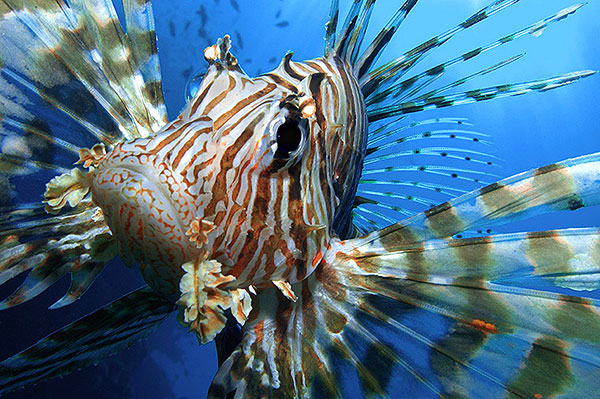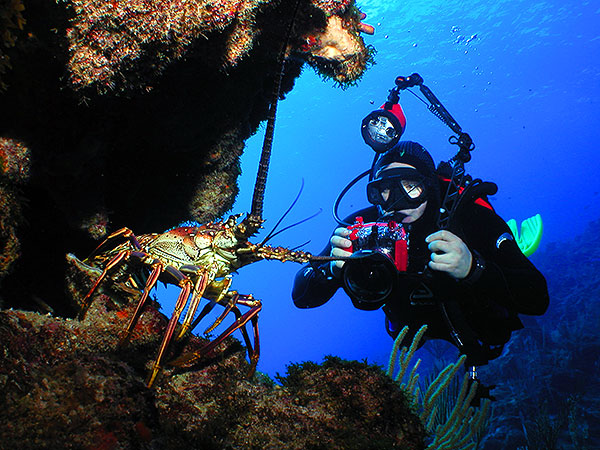The Trouble with TTL
TTL. It’s just three letters. But, boy, has it caused some trouble in these digital days. Underwater photographers, unlike our land-loving counterparts, invariably use flash in almost all our shots and this makes us very demanding when it comes to flash performance. Ever since TTL strobe control was introduced with the Nikonos V in 1984 the vast majority of images have relied on it.

TTL works on digital, but do we really need it?
Taken with Nikon D100 + SB80DX dTTL speedlight. Photo © Alex Mustard
TTL is tricky with digital because sensors don’t reflect light in the same way as film. Camera companies have been forced to develop new TTL protocols for their digitals, usually determining the required power output using pre-flashes. Unfortunately, traditional underwater strobes were not compatible with these pre-flash systems. Fixing this problem is exasperated because there are now so many different types of camera being taken underwater, and many have bespoke TTL flash metering protocols. Even within one brand there can be several different flash protocols. Ten years ago our camera choice was limited: Motormarine, Nikonos or a handful of housed SLRs. Today, according to the website Digideep.com, there are more than 600 digital cameras models with underwater housings.
A number of companies have worked hard to crack these codes. Indeed I imagine that right now we are benefiting from more R & D effort in underwater photography than there has ever been. For example Ikelite now has systems that allow TTL with some Olympus, Canon and Nikon cameras, and INON’s innovative new D2000 strobe is capable of TTL with almost every digital compact camera, yet its only connection to the camera is a fibre optic cable. And several European strobe manufacturers off Nikon and Canon digital TTL compatible strobes, often making use the of the electronics developed by photographer Matthias Heinrichs.

The author shooting with an INON D2000 TTL strobe. Photo © Joe Hoyt.
I do accept that TTL is a useful tool, and well worth having in the box (a TTL strobe can always be used in manual). Digital TTL also sells strobes. But many experienced digital shooters are now calling for underwater strobe companies to put their effort into other areas. Canon users want second curtain flash synch in an underwater strobe, and high-speed flash synch. Nikon users want to be able to realise the potential of their Creative Lighting System underwater.
The irony of the situation is that most digital photographers tend to cast off the crutch of TTL as their digital experience grows. They rapidly realise that not only is manual strobe control ridiculously easy with the instant feedback of the cameras LCD screen, but it also empowers them with more creative control. The sticking point is that each photographer who converts from film to digital cannot believe that they do not need TTL. TTL is such an essential part of film shooting. Each photographer has to go through the learning process for himself. They cannot be told. Nearly all film converts demand TTL and, driven by the market, the R & D effort is misdirected.
How do I know? I am part of the problem. When I first got my first digital SLR, a Nikon D100 back in 2002, I went to the expense and effort of housing a normal Nikon land flash so I could have TTL. I told everyone I needed it. But, like the reformed smoker I am now one of the most vehement critics of the necessity of TTL. This is not because I believe the new TTL protocols don’t work. They do. I have just seen my mistake repeated by so many, wasting time and money because the must have TTL with digital. Then half way through their first trip they turn off TTL and never turn it on again. Digital shooting is different from film. But it seems we can only learn that the hard way.
—
Dr. Alex Mustard
Talking Megapixels
Digital has ushered in many changes to underwater photography. The aim of this column is to discuss both the important and more frivolous consequences of these changes to the status quo of our consuming pursuit.